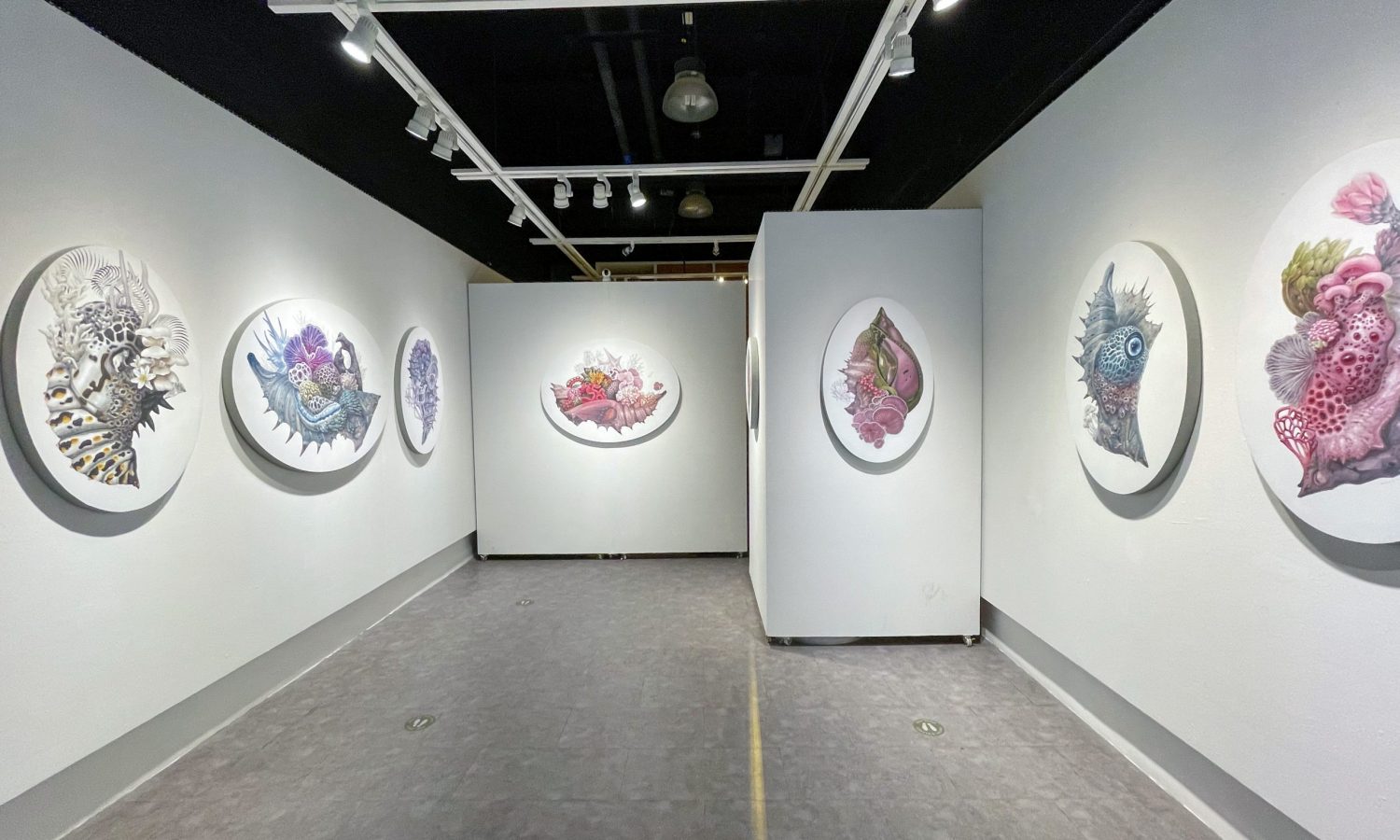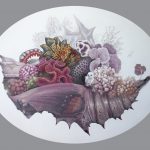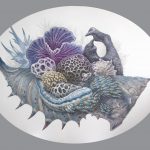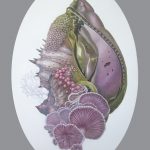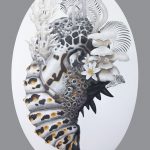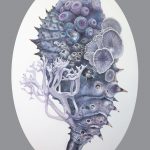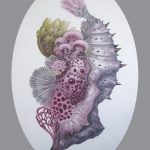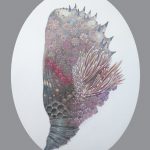A DIFFERENT KIND OF BLOOM
Emman Acasio
November 11, 2021
A DIFFERENT KIND OF BLOOM
WRITTEN BY CARLOMAR ARCANGEL DAOANA
Odd Beauty
In the works of Emman Acasio, one is instantly enthralled by his figures straight out of fantasy fiction or vivid imagination—those amalgams of different features of flora and fauna that somehow become their own unique entities. Because they are credibly illustrated and meticulous detailed, the viewer casts fidelity to what they see: never mind if the image ceases to resemble anything recognizable. The artist classifies his works as surreal, and their dreamlike quality is evident, but their subtlety and quiet allow them to unfold in the mind as something at once odd and irresistible, such as a two-headed animal or a deep-sea crustacean whose shell glimmers like gem stones.
Such evocation is further extended in Acasio’s latest offering, A Different Kind of Bloom, the artist’s sixth solo exhibition, and his fourth during the pandemic. That the artist has consistently produced work during the most challenging of times attests not only to his industriousness but to his wide- awake vision and ability of transforming the mundane materials of the world into otherworldly compositions. While these may technically be considered as still lives, the arrangements of the disparate elements of the works are dictated not by space but by juxtaposition and design.
For this show, Acasio assembles objects from the natural world such as crystals, mushrooms, shells, feathers, corals, anemones, horns, ferocious animals, with a few of them inflected with an eye as if to signify that they are animate, conversing with the audience through their singular fierce gaze. In oval-shaped canvases, the creatures are self-contained in their majesty. Their uniqueness is their power. Rather than filling the background with other elements, Acasio lets his invented figures luxuriate in vacant space. “For me it’s like rebelling from the traditional, in which it is a crime to leave white space,” he states. “I use the white background as a breathing space to my busy and already detailed subjects.”
These subjects, for the artist, represent the kind of growth that people have undergone during the months-long lockdown in which there was minimal contact with the outside world. In such a pressurised environment, coupled with the ever-looming threat of a fatal virus, hidden aspects of ourselves may emerge, certain mutations may occur, and new characteristics may develop that transgress the conventional expectations of normality. Instead of suppressing these processes, Acasio encourages the viewer to embrace them. “A Different Kind of Bloom is a reminder for us to grow into something beautiful no matter the odds,” he states. “It may be bizarre and not what we intended or originally planned, but it is what will make us unique.”
